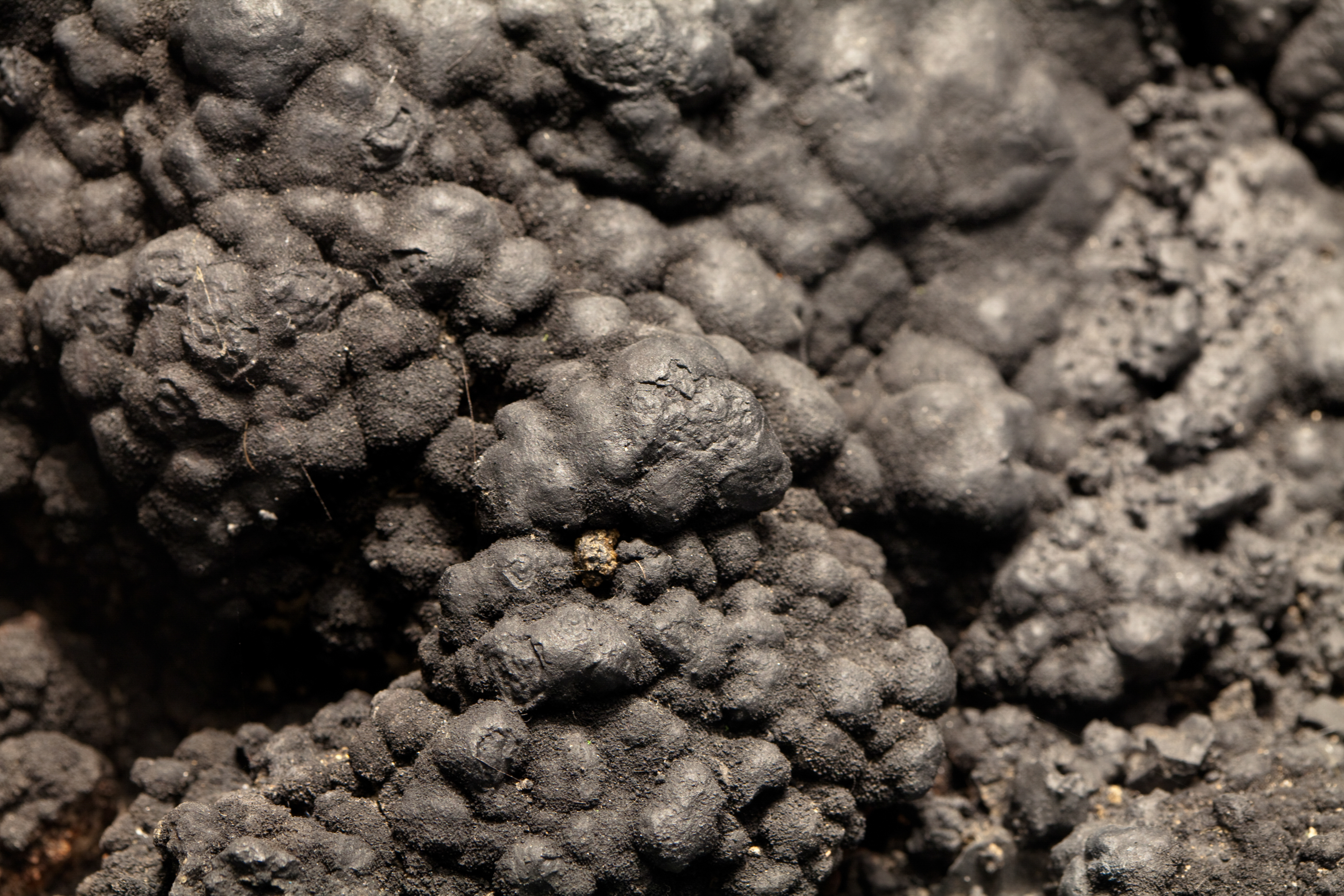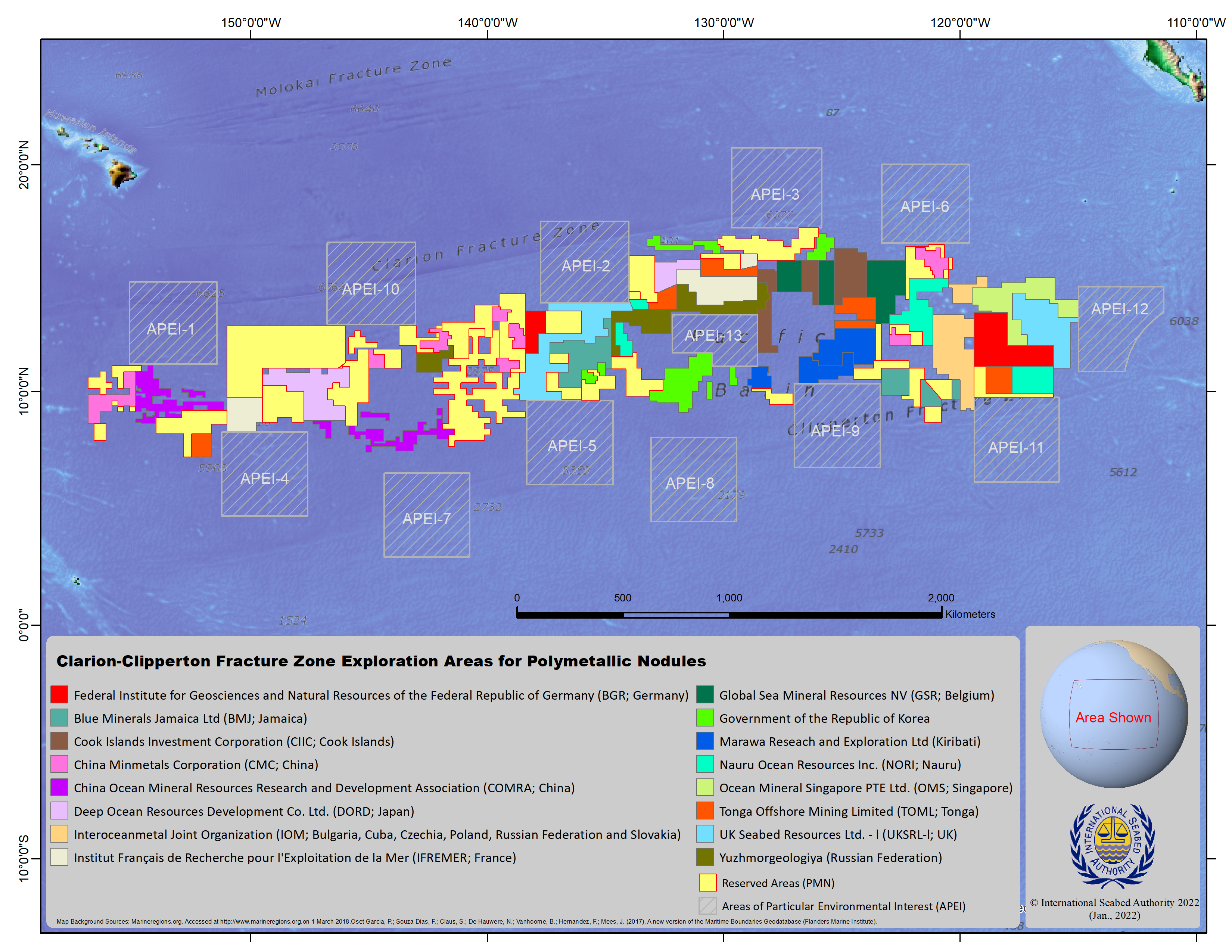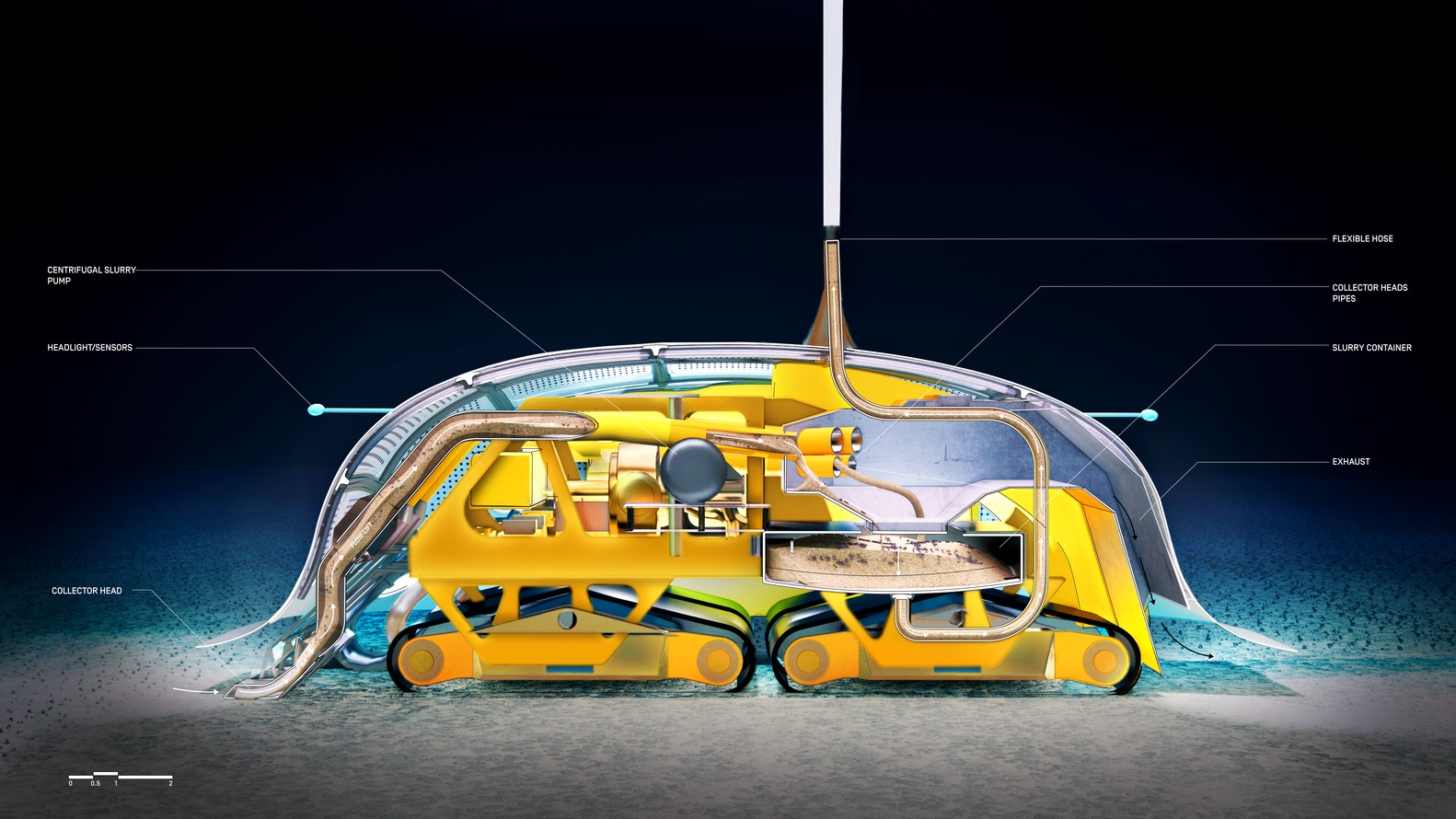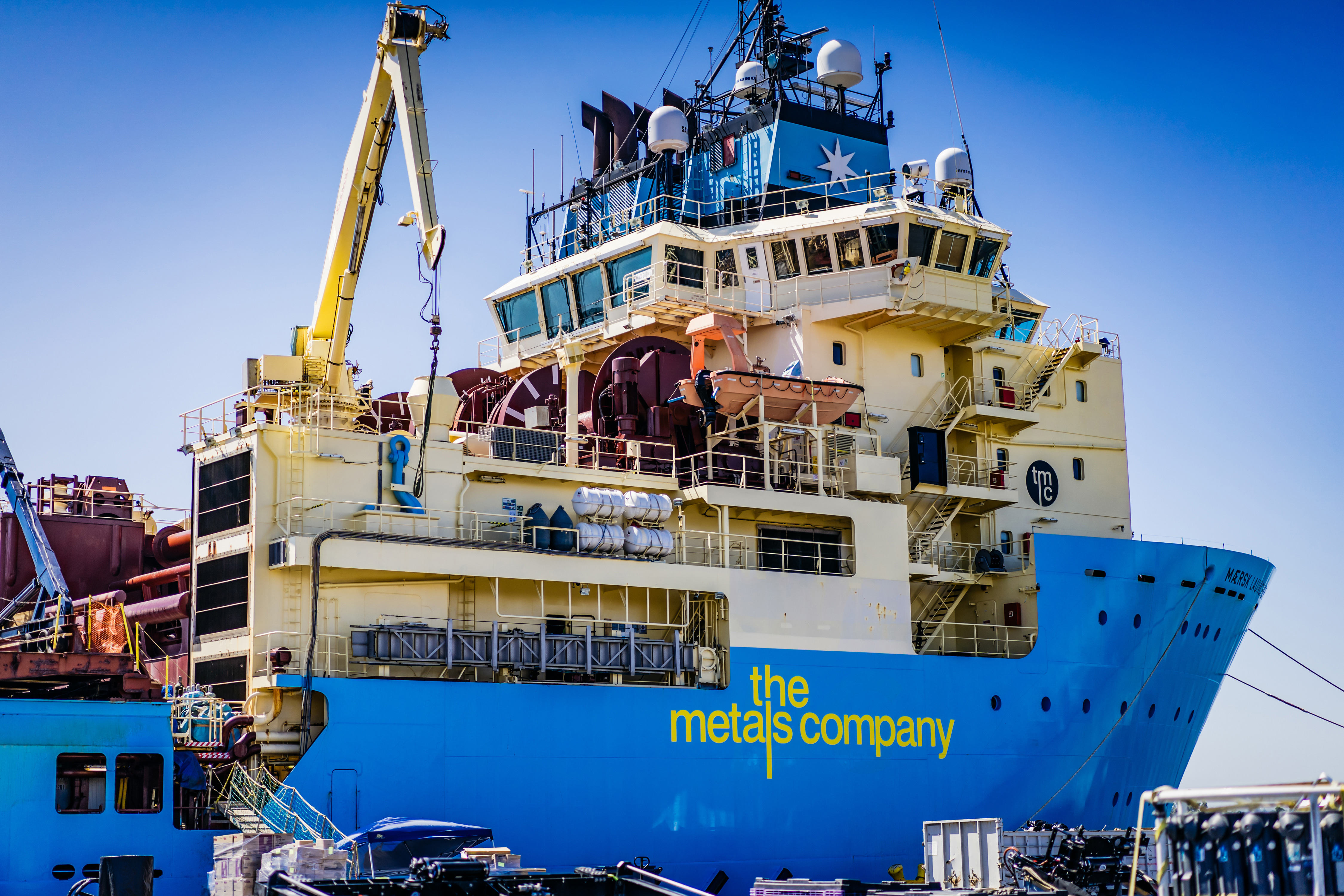5-MINUTE BRIEFING: OCEAN MINING
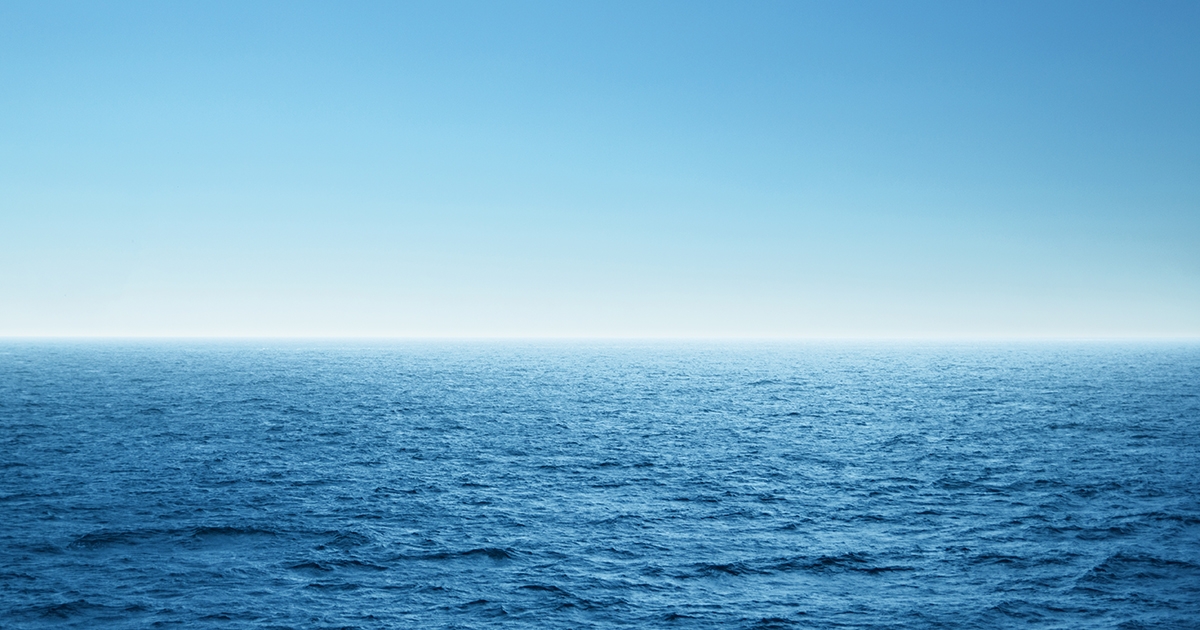
Few topics in the ocean industries are as complex as deep-sea mining. On the one hand, a new industrial frontier beckons us forthwith to harvest much-needed rare earth minerals from the seafloor, such as cobalt and lithium, the very elements needed to build a more environmentally sustainable future; on the other, mounting concerns surrounding the potential risk of causing irreparably damage to the biodiversity found in unique marine ecosystems. It is a subject of increasing interest among a broadening group of publics and, given how emotionally charged opinion tends to be, is often a trigger for engaging and provocative debate.
In its simplest form, deep-sea mining—also referred to as ocean mining—is the process of retrieving valuable and abundant natural resources from the seabed. However, as the last five decades have demonstrated, there is nothing simple about this seemingly inconspicuous activity.
AN INDUSTRY IN THE MAKING
The first real sign of any commercial interest dates back to 1960 and can be traced to the American engineer John L. Mero, who first raised the idea in an article for Scientific American and in a later book, The Mineral Resources of the Sea. Geologists of the day began to suggest that metals found in naturally occurring seabed deposits could be mined to meet the rising demands of a technologically advancing world.
In 1967, the Maltese ambassador to the United Nations, Arvid Pardo, famously questioned the eligibility of any one country or entity to rightly lay claim to these vast, untapped seabed resources in a three-hour speech before the UN General Assembly. He mooted that they be designated the “common heritage of mankind.”
In the 1970s, however, a number of ocean mining consortiums were formed to assess the commercial opportunities and propose the technologies required to effectively mine the seabed. INCO led the way with the creation of Ocean Management Inc. (OMI), a joint venture that also incorporated AMR (a German consortium), DOMCO (a Japanese consortium led by the Sumitomo group of companies) and SEDCO (a Texas-based offshore services provider). Finally, in 1978, OMI successfully conducted the first deep-sea mining pilot test aboard the SEDCO 445. The team collected approximately 1,000 tons of polymetallic nodules.
PRESENT-DAY COMMERCIAL INTERESTS
Broadly speaking, there are three types of seabed mineral deposits that are of commercial interest today: polymetallic nodules, cobalt-rich crusts, and seabed massive sulphides. Each is found in distinct habitats and so extraction requires not only robust scientific evaluation and mitigation, but the careful application of precise mining technologies.
| Type of mineral deposit | Average depth | Resources identified |
|---|---|---|
| Polymetallic Nodules | 4,000 – 6,000 m | Nickel, copper, cobalt and manganese |
| Cobalt-rich Crusts | 800 – 2,400 m | Mainly cobalt, some vanadium, molybdenum and platinum |
| Massive Sulfide Deposits | 1,400 – 3,700 m | Copper, lead and zinc, some gold and silver |
In recent years, most commercial interest has been geared towards the harvesting of polymetallic nodules from the seabed of the Clarion-Clipperton Fracture Zone, or CCZ.
POLYMETALLIC NODULES
What? Potato-like in shape, Polymetallic Nodules (also known as Manganese Nodules) are typically 4 – 10 cm in diameter and comprise primarily of manganese and iron (however, other metals have also been identified in significant quantities). These rock concretions, millions of years in the making, are formed of concentric layers of iron and manganese hydroxides around a core.
Why? Manganese nodules generally comprise of nickel, copper, cobalt, molybdenum, among other rare earth metals. Nodules also contain traces of other commercially critical elements, namely platinum and tellurium, both used in the manufacture of advanced technological products like photovoltaic cells and catalytic converters.
Where? Nodule accumulations of commercial interest have been discovered in four geographical locations: The Clarion-Clipperton Fracture Zone (CCZ) in the north-central Pacific Ocean; the Penrhyn Basin in the south-central Pacific Ocean; the Peru Basin in the south-east Pacific; and the middle of the north Indian Ocean. In the Pacific Islands region, the manganese nodule deposits are found in high concentrations close to the Cook Islands. Other areas of note are the two eastern island groups of the Republic of Kiribati (Phoenix and Line Islands), the western Kiribati group (Gilbert Islands) and within the Exclusive Economic Zone (EEZ) of the island nations of Tuvalu and Niue.
CLARION-CLIPPERTON ZONE
The Clarion-Clipperton Zone (CCZ), in the northeastern equatorial Pacific Ocean, is an abyssal plain of continental proportions between Hawaii and Mexico. As its name suggests, the zone is bound by the Clarion and Clipperton Fracture Zones and is home to the most abundant polymetallic nodule deposits yet to be discovered, as well as cobalt-rich seamounts.
Image credit: International Seabed Authority
Studies suggest that nodule volumes, typically found at depths of 4,000 – 6,000 m, range between 0 and ~30 kg m3, with an average of 15 kg m2 (Gollner et al., 2017); this equates to trillions of potato-size rocklike deposits rich in nickel, manganese, copper, zinc, cobalt, and other minerals lying atop a muddy bottom.
The proposed retrieval of these nodules involves the use of remotely operated vehicles that feed a deep-water riser pipe to transport the nodules to a surface vessel for cleaning and processing. The nodules are then destined for a land-based facility, whilst the rinsed sediment is returned to the ocean.
CLARION CONCERNS
The friable nodules require highly engineered extraction methods and the expert deployment of seabed mining technology, however, many among the science marine community are concerned about the long-term impacts of disturbing the seafloor in this manner.
At these depths, the nodules are the only hard substrate found on an otherwise barren seafloor, and so they are an anchor for megafauna and provide safe harbor for small sea creatures. According to some estimates, more than half of the megafauna is reliant on the nodules as a hard substrate (Gillard, Purkiani et al. 2019). Not only are nodules often covered with sessile organisms, but crevices are also inhabited by meiofauna. Many species may be endemic, but to what extent remains unknown (Gollner et al., 2017).
As interested parties debate the pros and cons of ocean mining, the general consensus from the marine science community is that exploitation activity in the CCZ, beyond the exploration permits already awarded, should be limited and heavily regulated to safeguard against irreparable damage.
A CALL FOR REGULATION
The United Nations Convention on the Law of the Sea (UNCLOS) was created in 1982, replacing the 17th Century “Freedom of the Seas” doctrine. UNCLOS was designed to define the rights and responsibilities of nations with respect to their use of the world's oceans. The ISA (International Seabed Authority) came into existence upon the entry into force of UNCLOS and was established in 1994 to regulate mining and related activities in the international seabed beyond any limits of national jurisdiction.
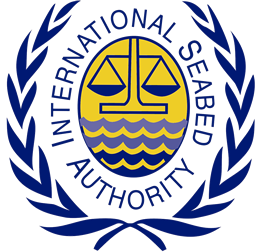 The ISA is an autonomous international organization responsible for regulating deep seabed mining and gives “special emphasis to ensuring that the marine environment is protected from any harmful effects which may arise during mining activities, including exploration” (isa.org.jm).
The ISA is an autonomous international organization responsible for regulating deep seabed mining and gives “special emphasis to ensuring that the marine environment is protected from any harmful effects which may arise during mining activities, including exploration” (isa.org.jm).
The ISA’s ongoing mandate is to consider contractor applications for the exploration and exploitation of deep-sea resources, evaluate environmental impact assessments and supervise mining activities in the “Area”—defined as the seabed and ocean floor found beyond the continental shelf or approximately 200 nautical miles from mainland.
Central to this is the establishment of clear guidelines for businesses, the environment, and the management of marine natural resources. This is commonly referred to as “The Mining Code” and refers to the comprehensive set of rules, regulations and procedures to which ocean mining entities must adhere to when prospecting, exploring or exploiting marine minerals found in the international seabed Area.
All rules, regulations and procedures are issued within the general legal framework established by UNCLOS, in particular its Part XI on the Area, and its 1994 Agreement relating to the implementation of Part XI of UNCLOS.
To date, ISA has issued Regulations on Prospecting and Exploration for Polymetallic Nodules in the Area (adopted on 13 July, 2000) which were later updated and adopted on 25 July, 2013; the Regulations on Prospecting and Exploration for Polymetallic Sulphides in the Area (adopted on 7 May, 2010) and the Regulations on Prospecting and Exploration for Cobalt-Rich Crusts (adopted on 27 July, 2012).
To date, the ISA has issues 31 exploration contracts to state sponsored interests, all looking to prospect mining operations in the CCZ.
 ENVIRONMENTAL DUE DILIGENCE: APEIs
ENVIRONMENTAL DUE DILIGENCE: APEIs
In July 2012, the ISA approved an Environmental Management Plan for the CCZ, a proactive spatial management plan designed to advance interests in mining exploitation while recognizing the designation of Areas of Particular Environmental Interest (APEI). The original proposal for the plan was based upon the results of the Kaplan Project (2002-2007), a collaborative undertaking by the Authority to assess biodiversity, species range, and gene flow in the abyssal nodule provinces. The Kaplan Project concluded that appropriate measures were needed to protect and sustain biodiversity in the CCZ and, as a result, a network of nine protected areas was established to preserve the CCZ’s full range of habitats and communities, including those native to abyssal plains, abyssal hills, seamounts and fracture zones.
These biogeographic subregions were determined to be large enough to maintain minimum viable population sizes for species potentially restricted to a subregion. Each APEI is 400 km x 400 km and, with buffer zones to mitigate against any external anthropogenic impacts like sediment plumes, the nine current APEIs represent more than 30% of the total CCZ management area.
TECHNOLOGY IN FOCUS
The exploration phase involves locating deposits, sea bottom scanning and sampling using tried and tested oceanographic technologies in the field today, such as echo-sounders, side scan sonars, deep-towed photography, remotely operated vehicles (ROVs), and autonomous underwater vehicles (AUVs.) The examination of this data is essential in the feasibility and valuation of potential mining activities.
Environmental monitoring and impact assessment analysis relate to the temporal and spatial discharges of the mining system if they occur, sediment plumes, disturbance to the benthic environment and the analysis of the regions affected by seafloor machines. This analysis involves the ongoing examination of disturbances near the seafloor, as well as disturbances near the surface. Observations include baseline comparisons for the sake of quantitative impact assessments for ensuring the sustainability of the mining process.
Image credit: Bjarke Ingels Group
However, some of the critical technology required for exploitation activities—in particular the collector system—is highly custom engineered, and while the global pandemic has hindered certain aspects of the ocean mining industry—travel restrictions meant campaign delays and led to the postponement of several critical ISA assemblies—work to develop innovative solutions has pressed forward. Although a great deal of equipment can be borrowed from the offshore oil and gas playbook—drill vessels, riser pipe, etc.—technologists are busy testing sophisticated collector systems for seabed deployment.
While designs for collector systems vary, they are unified by a common goal: to maximize nodule yield with the minimum wastage or environmental damage. This sounds obvious enough, but there is nothing obvious about operating at depths of up to 6,000 m.
POLICY UPDATES IN 2022
The Council of the International Seabed Authority (ISA) closed the first part of its 27th session on 1 April 2022, with all 36 members in attendance, either in person or virtually; other Members and 15 Observers were also in attendance. The main item on the agenda was the draft Regulations on exploitation of mineral resources in the Area.
More specifically, the three informal working groups established by the Council in February 2021 held their first in-person meetings and discussed, i) the protection and preservation of the marine environment, ii) inspection, compliance and enforcement). The facilitators will receive textual proposals on relevant draft regulations and draft standards and guidelines in April 2022. They will prepare their respective texts for consideration by the Council during the second part of the meetings in July 2022.
According to the roadmap endorsed by the members of the Council, the 27th session of the ISA Council will be held in three parts. The second part of the 27th session of the Council will take place in July 2022.
While the Council considers the necessary regulatory framework, there are several operators investing heavily in the testing and evaluation of suitable nodule extraction methods and technologies.
Image credit: The Metals Company (TMC)
RECENT SUBSEA ENGINEERING PROGRESS
In late March, The Metals Company Inc. (TMC) announced that its subsidiary NORI signed a non-binding term sheet with its strategic partner and shareholder, Allseas Group S.A. to develop and operate a commercial nodule collection system with a targeted production capacity of 1.3 million tonnes per annum (Mtpa) of wet nodules and expected production readiness by Q4 2024.
The pilot collection system—which includes the production vessel Hidden Gem, a seabed collector, and a riser that lifts nodules from to the surface—is undergoing wet testing by Allseas in the Atlantic Ocean. The expectation is for the system to be fully piloted in the NORI-D Area in the Pacific Ocean later in 2022.
Also in March, Impossible Mining (IM) revealed details of its own proprietary technology designed for “selective” nodule harvesting. By partnering with Boskalis, IM is seeking to disrupt the mining industry—on both land and underwater—by introducing a technology that will, they believe, make seabed mining more sustainable, more economic, and more secure. As opposed to deploying a tracked collector to traverse the seafloor, IM’s is proposing a fleet of AUVs capable of rapidly collecting individual nodules using multiple high-speed manipulators, all the while staying buoyant above the seafloor.
Clearly these two approaches—while seeking to achieve the same goal—take a fundamentally different engineering philosophy. The challenge in 2022, therefore, is for mining companies to keep pace with the regulatory bodies and vice versa.
Whilst any notable progress towards the commercial endeavors to mine the Deep Sea is likely to further split public opinion, continued access to clear and reliable information—which means ongoing transparency with regards to proposed extraction technologies and robust environmental scientific analyses—will help stakeholders manage critical decisions that will ultimately shape how this industry develops.

